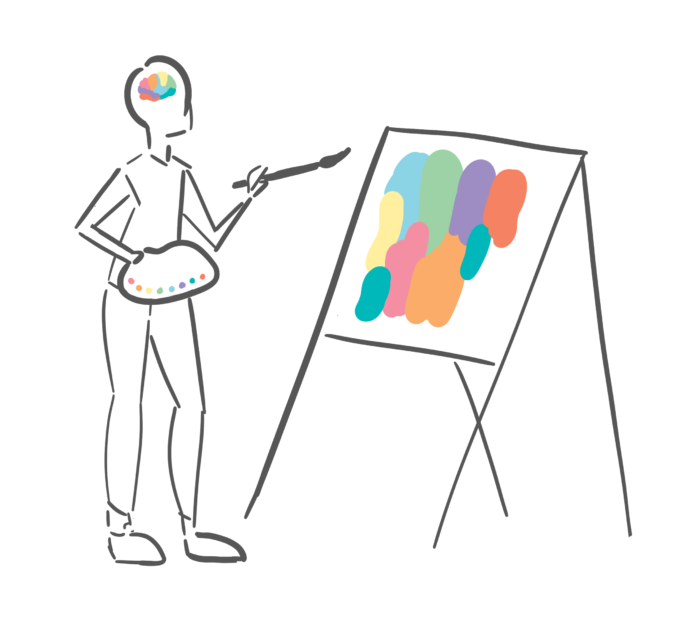The practice provides a way to think without overthinking it
By ANA BACH — arts@theaggie.org
Modern society has made considerable strides toward breaking down the stigmas surrounding mental health. Though we still have a long way to go, it has become more socially acceptable to open up about mental health struggles and advocate for alternative forms of therapy to aid recovery than ever before.
Thanks to social media, it has become normalized to share personal experiences and the journey towards healing online, which has created a large community to help people of all demographics feel comforted in times of distress. However, there is still an undeniable sense of taboo regarding some mental health discussions that may make it difficult for people who need help to seek it.
For those who have difficulty opening up, practices that involve less thought with more reflection may be easier options, with one such practice being art therapy. In its simplest terms, art therapy is defined as a practice of psychotherapy that has little to no strict structure in terms of painting, drawing or making other forms of art.
I started practicing this style of therapy after seeing countless therapists by the age of thirteen and making little progress toward a better mental state. It helped to have an outlet that was free from any harsh instruction or constrained way of thinking. Art therapy gives me the ability to create something without a strict standard to hold myself to.
Watercolor is a common medium used in art therapy sessions and has proven helpful in terms of building problem-solving skills because the paint creates amorphous structures that can be left up to interpretation. I typically would focus on one or two colors within the same palette and, as silly as it may sound, would just let the brush take control. Through this explorative endeavor, I discovered more about myself without the limitations of what was expected from me.
An article by the Canadian Counselling and Psychotherapy Association that goes into the psychological benefits of art therapy shares how the practice is extremely helpful for children in their developmental stages. Asa Don Brown writes, “A child’s empowerment occurs when they are capable of expressing their troubles, concerns, and challenges in a non-threatening, non-hostile, and noninvasive therapeutic session. When a child is empowered they are given a torch of emotional freedom.”
Art is a powerful tool for those who struggle with verbal forms of communication. It is a great way to make someone feel heard amidst all the noise in the world around us. This “torch of emotional freedom” is something that we rarely embrace and oftentimes shut down altogether in our adult lives if we were never taught how to be comfortable expressing our emotions in our adolescence.
In an effort to “explore my inner child” and reteach myself how to feel at ease when being benign and vulnerable, I often rekindle my practice of art therapy, using watercolor, pen, collage-making and more. It feels good knowing that little mistakes can be turned into something better and more beautiful than anticipated.
Art is a practice that welcomes all. Everyone can create something, no matter their skill level, and that should be celebrated. I recommend trying it out, and letting yourself harness the power to be the catalyst for your emotional freedom.
Written by: Ana Bach — arts@theaggie.org





